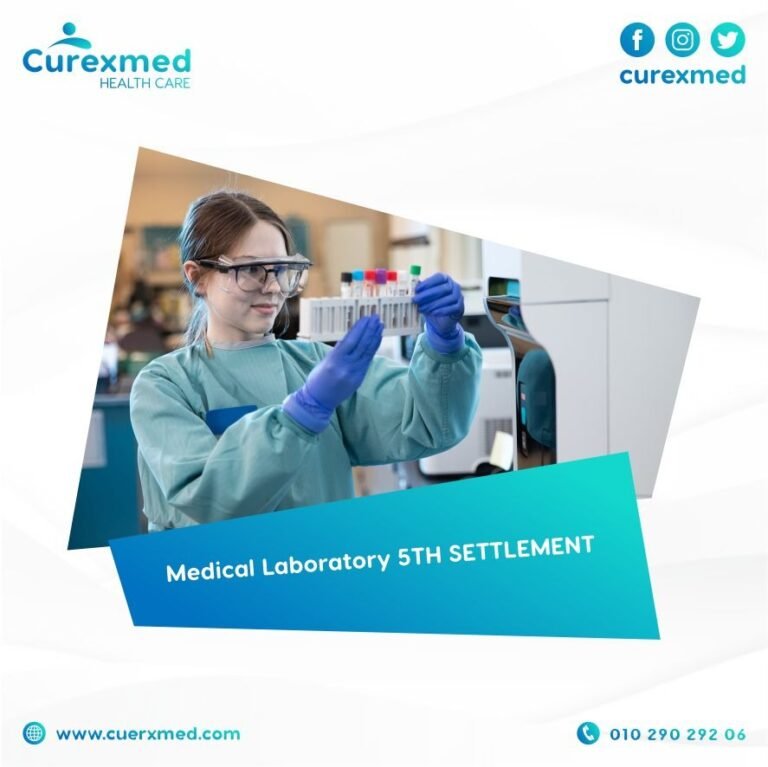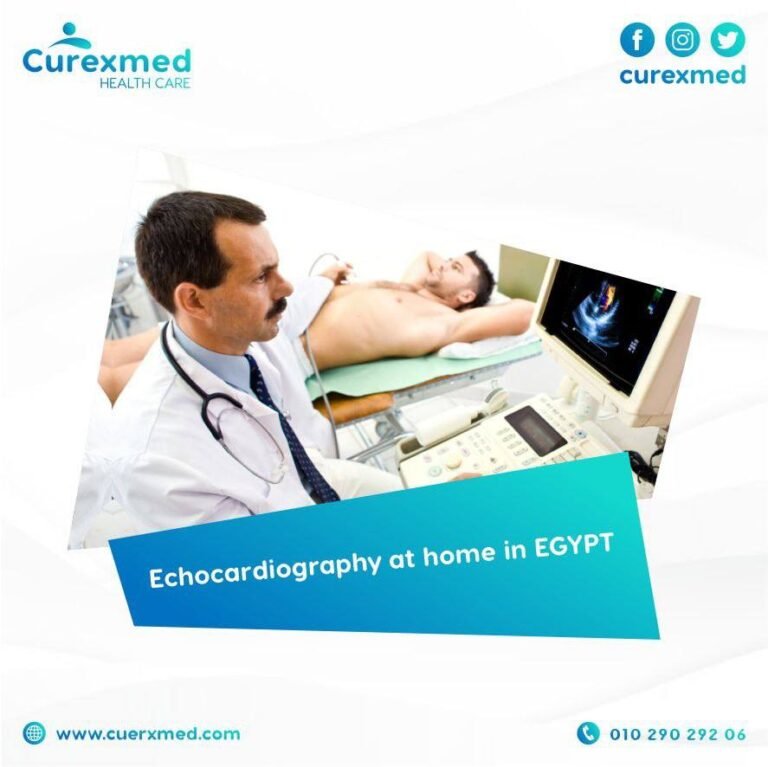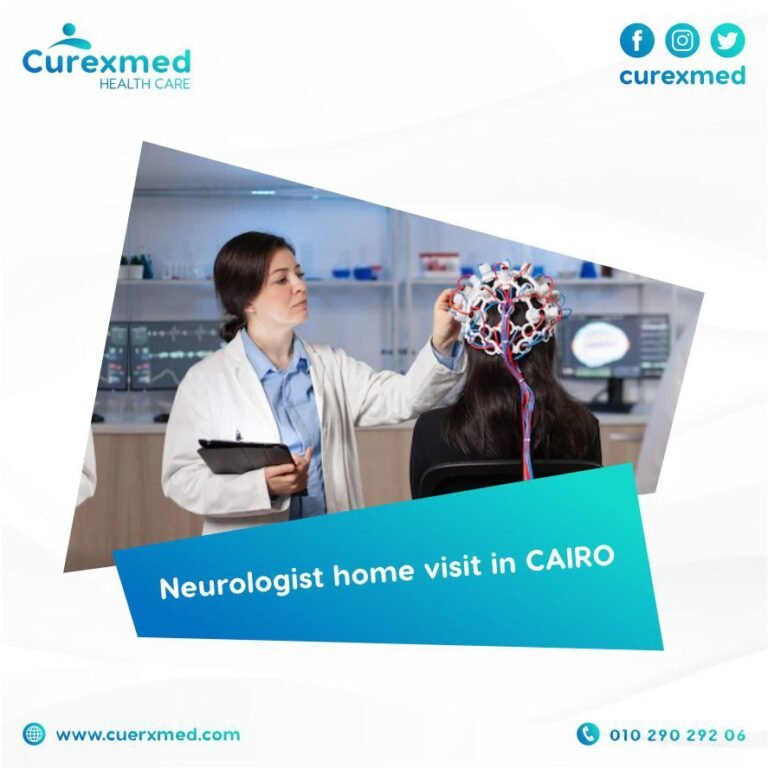The best EEG at home in Egypt

EEG is one of the most important diagnostic tools in the medical field. as it contributes to the detection and diagnosis of many brain-related diseases. so we in curexmed providing the best EEG at home in Egypt service, to let you follow your brain health condition easily without having to go to any radiology center.
Electroence Paleography (EEG)
EEG is one of the medical tests that helps diagnose brain diseases such as epilepsy. Alzheimer’s, and brain tumors by measuring the electrical activity of the brain by recording electrical waves from the brain on the screen of the EEG device.
EEG Types
In Curexmed, we provide The best EEG at home in Egypt, and these are of several types
Standard EEG
The time requested for doing standard EEG ranges from 20 to 40 minutes.
In EEG testing, the doctor asks the patient to relax, open and close his eyes from time to time. The patient may be required to perform deep breathing from time to time. and sometimes the patient may be exposed to photosensitive effects to record the brain’s activity for these effects.
Sleep EEG
This test aims to record brain activity during sleep, doctors usually use that procedure to test sleep disorders, or if the Standar EEG does not give sufficient information.
Ambulatory EEG
This type of EEG is done by using a portable EEG device with the patient to record his or her brain activity over one or more days and nights.
Video EEG (Video telemetry)
This procedure is done in the hospital where an EEG is done and the patient is videotaped for several days to closely follow the brain activity.
When EEG is requested?
Hurry up to order an EEG scan at home service with Curexmed, as EEG helps diagnose many diseases:
- epilepsy and convulsions;
- Sleep disturbances (eg insomnia, narcolepsy).
- head injuries
- Brain infection (encephalitis).
- cerebral hemorrhage
- Alzheimer’s disease.
- Metabolic conditions affecting brain tissue.
- Hormonal conditions that affect brain tissue.
- Certain disorders of the central nervous system.
- Brain tumors (benign and malignant).
- Brain death.
Types of convulsions and seizures
EEG contributes to diagnosing convulsions, and they are classified into:
Generalized Seizures
General convulsions occur throughout the body due to a complete imbalance of the brain’s electricity and are divided into:
● Tonic-clonic seizures
This type of convulsions is characterized by loss of consciousness and muscle spasms, which may be continuous (Tonic seizures), that is, uninterrupted, or intermittent (Clonic seizures) in the form of regular and frequent muscle twitches.
Whether these spasms are intermittent or continuous, they occur all over the body, especially in the arms, legs, neck, and back muscles.
● Absence seizures
Book now to do an absence seizure EEG at home with Curexmede.
These seizures are characterized by loss of consciousness where the patient is awake but absent-minded for a period, ranging for a few seconds (approximately 10 seconds), and this is what distinguishes these seizures from cases of fainting.
Also is often not accompanied by any convulsions or movement disorders, but this does not mean their absence in some cases.
● Myoclonus seizures
They are rapid contractions of the muscles of the body that last for a second or two at most, and what distinguishes them is that they occur constantly for the affected person. So not every rapid muscle contraction is considered a myoclonus seizure.
● Atonic seizures
What distinguishes this type of seizure is that it differs from all of them, where there is muscle relaxation, no muscle spasm or muscle tension, but it may expose the patient to injuries to, such as relaxation of the muscles of the legs and falling.
Partial Seizures (focal)
This type of seizure occurs as a result of an electrical disturbance in a specific part of the brain and therefore affects only a specific part of the body. It may occur with or without loss of consciousness:
- Partial (focal) convulsions with loss of consciousness.
- Focal partial convulsions are not accompanied by loss of consciousness.
Curexmed offer EEG brain scan in Egypt in all areas of the governorates of Cairo, Giza, and Alexandria, service 24 hours / 7 days a week.
EEG procedure
The EEG is measured using electrodes placed on the scalp connected to an EEG device that measures the electrical activity emanating from the brain through these electrodes and then recorded to appear on the device screen as electrical waves.
The EEG procedure is also a simple medical procedure, as it does not cause any pain while performing it. It also does not need to remove any hair from the head to do it, but the hair must be clean, so you only need to relax and carry out the doctor’s orders.
The standard EEG usually takes 40-60 minutes, ambulatory EEG may take one day, and a video EEG may take days.
What Do Normal EEG Results Mean?
The electrical brain activity is recorded in the form of waves (alpha, theta, beta, and delta).
In the EEG recording, each wave shows a specific wavelength, frequency, shape, and location, and the person’s age may also be an influential factor in determining whether the pattern of those waves is normal or not. For example, the appearance of a delta wave is normal in the EEG for children and adults during sleep, while it is abnormal when the delta wave is seen on the EEG of awake adults.
What Do Abnormal EEG Results Mean?
- It may appear as a sudden change in the EEG pattern appears after it was normal, and this appears either in a specific part of the brain (partial epileptic seizures) or in the whole brain (generalized epileptic seizures).
- or abnormal changes that are not epileptics, such as a change in frequency, height, or wave shape, or the appearance of a wave that should not appear, such as the appearance of a delta wave in awake adults.
What is the EEG price?
The price of the EEG scan at home service varies according to several factors such as the geographical location of the patient, the time of requesting the service, the type of EEG, and other factors.
But be sure that the EEG scan service with Curexmed is the best home service offered at the best prices.
Can epilepsy be diagnosed as seizures with normal EEG and MRI?
It is not necessary to record an abnormal EEG if you have epilepsy or convulsions, because EEG records brain activity only at the time of the EEG test.
The EEG may appear normal if the patient does not experience seizures or convulsions during the test.
MRI is a procedure that shows the structure of the brain and the way it works and functions.
The doctor may request an MRI examination for a patient with epilepsy to see any actual cause of epileptic seizures, such as the presence of a physical wound or a defect in the brain.
However, many people with brain defects do not have epilepsy, and many people with epilepsy may not have any brain injuries or diseases.
What are the side effects of EEG?
EEG is a simple, easy, and very safe procedure that does not have any side effects, except the need to wash the hair after removing the electrodes.
Also, The epilepsy patient may have seizures or convulsions during the EEG, but there is no need to worry because he/ she will be under observation, and these seizures may help in recording the EEG more accurately.






